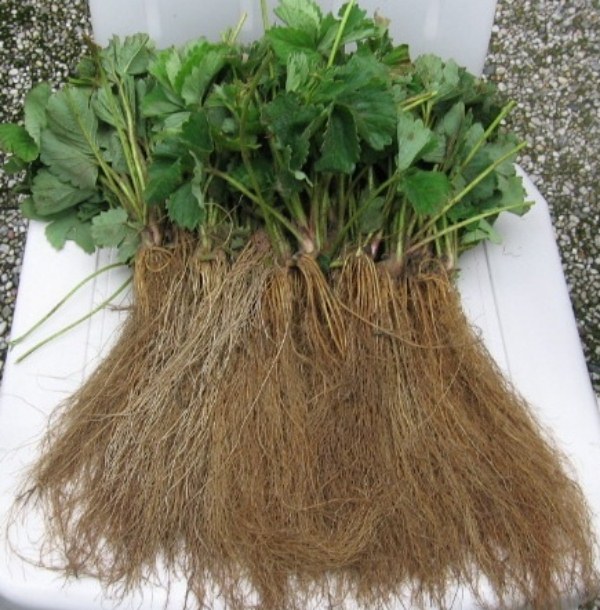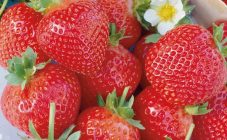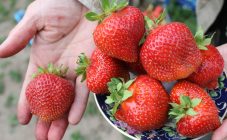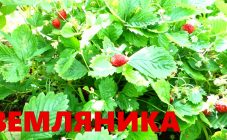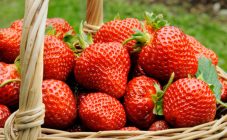Content:
Strawberries are not just a delicious berry, they are also very healthy. Frequent consumption of strawberries helps to strengthen the body's protective cells, increase hemoglobin, and tidy up the digestive tract. However, this plant requires special care and a favorable climate. The Elsanta strawberry variety is an exception. You can even grow it in an apartment. Moreover, its unpretentiousness does not affect the appearance and taste. In addition, the species has a high yield: more than 2 kg of fruits can be harvested from one bush.
History of creation
Elsanta strawberries originated in Holland. The variety was obtained in the late 90s. To obtain this type of strawberry, Gorella and Holiday were crossed. Thanks to this, gardeners now have the opportunity to plant a high-yielding and unpretentious strawberry variety.
Characteristics of the variety
In the description of Elsanta strawberries, it is said that it is medium early: the fruits ripen in early or mid summer, depending on the growing region and weather conditions. The plant is not frost-resistant, therefore, if there is a threat of frost, the bushes should be covered. Elsanta is high-yielding, a couple of bushes in the backyard will give a good harvest. The plant is warm and light-loving, but it does not like extreme heat. Unfavorable weather conditions lead to lower yields and a decrease in fruit size. However, this type of strawberry is not as whimsical as other types.
The plant itself is low, the stems are strong, erect. The leaves are very large and have a rich green color with a slight sheen. A distinctive feature of the varietal culture is that the leaves are slightly concave in the opposite direction. A small number of antennae are formed on one bush, which is why it is not necessary to frequently carry out the pinching procedure. During flowering, a large number of medium-sized flowers are formed. Flowers are next to the leaves. They are white with a pronounced yellow core.
The ripe fruit of this plant variety is not very large, the weight of a ripe berry does not exceed 50 g. The fruits of Elsantha strawberry are conical, dark red, shiny. The berries are firm and crunchy when eaten fresh. The berries are sweet, but slightly sour. The fragrant fruit is abundantly covered with small yellow seeds. The variety is not remontant.
Growing features
This type of strawberry should be planted in the fall or spring. The end of September and the beginning of October are best suited for planting. In September, it can still be hot, and watering at this time can damage the roots of a young plant. And if planted in spring, then in the first year the yield will be low, and the fruits will also be small.
You need to plant seedlings in pre-prepared soil, so the garden plot needs to be fertilized several weeks before planting. Bushes should be planted in moist and saturated soil. It is recommended to responsibly choose the time for planting so that it is not too hot, as the sun weakens the shoots. You should not pour fertilizer into the hole, as this can adversely affect the plant.
The distance between plants should be about 40 cm.After the seedling is placed in a hole of medium depth (about 20 cm), the soil around must be well tamped, and the seedlings must be carefully and abundantly watered. Then, it is advisable to mulch the ground around the bush. This helps to avoid overgrowth of weeds. To make mulch, you will need straw (preferably wheat), pine needles, sawdust, dried foliage. Before filling the mulch, it should be scalded with hot water to kill all parasites and their larvae.
For the first 2 weeks after planting, frequent, but not abundant watering is required. It is advisable to moisturize the soil in the morning and evening. After this period has expired, water should be less often (2-3 times a week), but give the plant more water. If there is a threat of frost, planted plants should be covered with foil.
The culture does not need frequent fertilization. The plant develops and strengthens independently. Thanks to this, it becomes resistant to many diseases and gives a good harvest under all conditions. However, in autumn and spring, the land should be enriched. The first time you need to feed it in the spring, immediately after the weather is established. To enrich the soil, nitrogen fertilizers should be used, since the plant will need nitrogen when forming stepsons, flowers and fruits. In autumn, organic fertilizers should be used: manure, compost, humus, about 100 g per bush.
Throughout the season, the earth needs to be softened from time to time. Loosening of the soil should be carried out every 14 days. This not only softens the soil, it also inhibits weed growth.
At the end of the season, the bushes must be carefully trimmed, because highly developed antennae and leaves take a lot of energy from the plant. The best time to carry out the procedure for removing excess leaves and stems is August. Eliminate unnecessary sprouts with special scissors or pruning shears.
Garden strawberry Elsanta does not tolerate low temperatures well, therefore, the bushes must be carefully covered before freezing. But for this they need to be prepared: diseased or damaged leaves and stems must be removed. After that, the plant is carefully and tightly covered with straw, hay and covered with a film on top.
It is required to process the plant from various diseases and pests only a couple of times per season. Do not spray the plant when it is in bloom or during berry formation. The summer resident, preparing the solution, must follow all the recommendations and not shy away from the instructions. The treatment should be carried out with gloves, it is advisable to avoid contact of chemicals on the skin, as this may cause irritation.
Advantages and disadvantages of the variety
Advantages of the Elsanta strawberry variety:
- great taste;
- high productivity;
- average rate of formation of stepchildren;
- resistance to many diseases;
- the possibility of long-term storage and transportation;
- unpretentiousness;
- presentation of fruits.
The main disadvantages of the variety are:
- sensitivity to temperature fluctuations;
- the need for mulching.
Another disadvantage of this variety is that it is not suitable for all regions, since the plant does not tolerate low temperatures well. However, growing in a greenhouse method will make it possible to breed the variety even in regions with a harsh climate.
Elsanta garden strawberries were bred back in the 90s and since that time has remained one of the best varieties. The characteristic of the plant has many positive aspects. For planting it, the gardener should take into account some of the nuances.The fruits of strawberries are sweet with a slight sourness, and when eaten fresh, they crunch, but this only gives the strawberries a zest. It is a dessert variety, but it can also be used for making juices. The plant is not particularly whimsical: it needs moderate watering, pinching and frequent loosening of the soil. Also, the culture is resistant to many types of diseases, so frequent processing is not required. The plant does not tolerate temperature fluctuations, especially cold, in order to protect it, it is important to cover the bushes in time, well prepared for winter.
